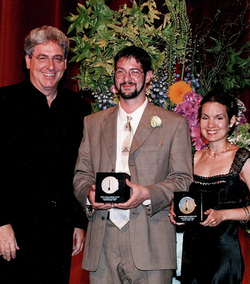20 minutes
Short Film
Historical Fiction/Non-Traditional Narrative
by, Jessica Lakis & Michael Mullan
DEAR SIR traces the interconnected stories of a Civil War soldier and a modern young man, who shares the soldier’s name, as they struggle with both their individual fates and common dreams.
The impetus for DEAR SIR came when co-filmmaker Michael Mullan discovered a gravestone at the Gettysburg National Cemetery that bore his name. Research revealed the historical Lt. Michael Mullin to be an Irish immigrant who once lived in Mullan’s old neighborhood in Philadelphia. DEAR SIR creates a framework to allow these two men to communicate over the chasm of time that separates them.
The method of communication relies on the (fictitious) journal of the late Lt. Mullin and the modern Mullan’s letters of question and response. The resulting exchange drives the narrative to the inexorable conclusion of Lt. Mullin’s life, and the modern Mullan’s coming of age as a man.
Writer/producer/co-director and editor/sound mixer, Jessica Lakis, based her writing of Lt. Mullin’s “journal” on archival biographical information on Lt. Michael Mullin, research into the Irish immigrant experience of the American Civil War, along with contemporary writing.
Filmed in Pennsylvania. on a shoe-string budget, DEAR SIR went on to become the only selection of an under-graduate film at the 2000 Student Academy Awards, and 2001 Winner of the Jimmy Stewart Crystal Heart Memorial award, among other honors. DEAR SIR also received local and national airing on PBS, IFC, and Bravo. DEAR SIR, (LETTERS TO A UNION SOLDIER) continues to catch the attention and hearts of all who watch it.
Dedicated to James N. Lakis
1931-1998
Father, artist, teacher


February 16th, 2017 at 5:36 pm
“There have been instances in far-distant times of a perfect physical resemblance between two people…The most remarkable case we know was that of a particular town, long since disappeared, in which in the same street and in the same house, but not in the same family, and separated by an interval of two hundred and fifty years, two identical women were born. This marvellous event was not recorded in any chronicle, nor was it preserved in the oral tradition, which is perfectly understandable, really, given that when the first was born, no- one knew there would be a second, and when the second came into the world, all memory had been lost of the first…The fact that history does not record a fact doesn‘t mean that that fact did not exist.” – José Saramago, ‘The Double’
LikeLiked by 1 person
February 16th, 2017 at 5:59 pm
This is beautiful. I need to look this up. And rewrite this page! My skills at film synopsis have grown since I posted this!
LikeLike